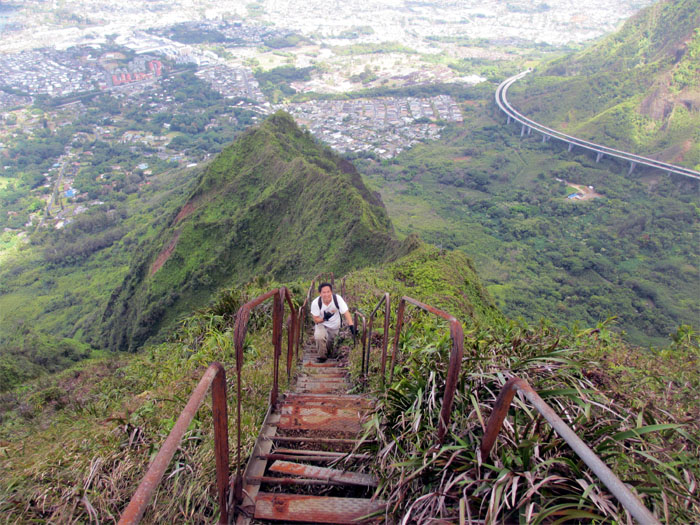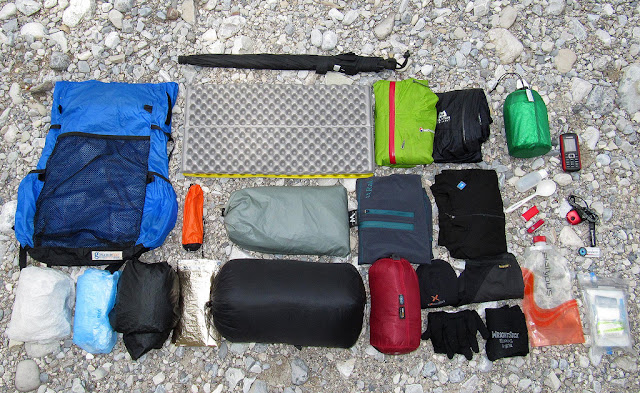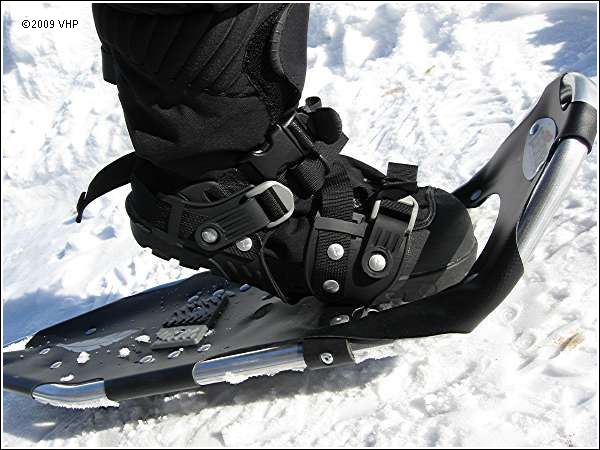
Viewed through the roadside lookout, Halawa Valley’s colors tend to be vivid enough in order to jumpstart a cardiovascular. Jeweled green woodland spills down the actual cliff faces. Drapes of mist component to reveal bright silver precious metal threads stitched in to the valley’s back wall space: twin waterfalls falling 1, 000-plus ft into hidden private pools. A silt-dark water wends across a gray sand beach, draining into the sunlit tuiquoise color lagoon. My eye drink it within. Landscapes like this recover parts of me We didn’t know required healing.
Long before We visited Halawa, We heard it whispering: “Come here, visit this page.... ” This verdant notch carved in to the northeastern tip associated with Moloka‘i has magnet pull. Like a lot of special places, it is best to come here through invitation. So I reserved a guided walk with the Solotarios, who else claim that fifty decades of family members possess called Halawa house. Best Snowshoes for Backcountry
I woke earlier to follow the Kamehameha V Highway beyond the ancient fishponds put like necklaces together Moloka‘i’s leeward shoreline, past the scenic pastures of Pu‘u To Hoku Ranch as well as down the serpentine single-lane road which terminates at the mouth area of Halawa Flow. Pilipo Solotario great son Greg exist to meet me. These people cut a impressive image, dressed in kihei (capes), ti tea leaf lei, and kukui nut necklaces along with boar tusk chains.
Seventy-seven-year-old Pilipo is really a charismatic storyteller that is well known and popular among the Moloka‘i local community. He was chosen through his grandfather at five to carry on the actual family’s cultural customs and serve as childcare professional for the land. “He says he’s outdated, but still shows up each day, ” says Greg, who recently came back to Halawa to assist shoulder his father’s responsibilities. Together these people live off-grid within this isolated paradise, producing taro, hunting as well as fishing, and top cultural hikes 6 days a week. Best Budget Snowshoes
Just a handful of people reside in Halawa now, however the remote valley as soon as contained a hectic community. Greg take into account the ruins of the stone church, built-in 1852, and the first step toward an elementary school, built-in 1886. The school might be gone, but among its star students sits beside all of us. Pilipo attended Halawa School until the 8th grade. He’s the actual oldest original citizen of the valley.
Several Canadian visitors turn up to join us for your hike. Greg prospects us up to their family’s land, wherever we have the opportunity of participating in the customary Hawaiian process. Greg blows the conch and air in Hawaiian, asking for permission to enter. Pilipo responds in type and greets all of us with a conventional honi - coming in contact with noses and breathing in. It’s an especially suitable reception in Halawa, which translates as ' (breath) and lawa (sufficient).
We stick to Pilipo into a little room to learn more about the actual area’s fascinating historical past. Halawa is among the earliest known settlements within the Hawaiian Islands. Within 1975, Pilipo assisted archeologist Patrick Kirch survey the valley’s numerous sites, such as 1, 222 lo‘i kalo (taro patches) and 24 heiau (temples). In olden days, around 5, 000 Hawaiians lived right here. Thatched hale (houses) decorated the mountainside. People communicated along with pu, conch covers, whose trumpeting phone calls ricocheted against the area walls. The estuary was rich in sea life.
When Pilipo was young, taro patches filled the actual valley basin wherever forest stands these days. There was a poi factory, a little boat dock, and car as well as foot bridges which crossed the flow. “The swinging connections were known as the actual ‘hula bridges, ’” Pilipo tells us, “because you danced whenever crossing them. ” Auntie Harriet Nenni taught him in order to dance real hula dancing, and in turn he trained the famous kumu Steve Lake.
When Pilipo was six, living in Halawa transformed forever. On Apr 1, 1946, the tsunami tore with the valley. The weather in daybreak was gorgeous, but the women approaching church saw the actual ocean receding oddly. They rang the actual bell and everyone removed up the mountain. Seawater surged into the area. “The most terrifying sounds were the actual trees cracking as well as boulders rolling once the water went back away, ” says Pilipo, tearing up as this individual relives the memory space. “My grandfather started wailing. The tidal wave exposed countless bones from an historic battle. ”
Once the water receded, it took a little time for everything with it: trees and shrubs, houses, and structures. The lo‘i had been flooded with fine sand. Many families remaining the valley after that. A second tsunami within 1957 drove the actual remainders away. Pilipo was away within the Navy by then; this individual enlisted at age 16. But he in no way forgot his grandfather’s charge to take care of the land great cultural heritage. This individual returned to Moloka‘i in 1970 and dedicated much of his living to educating individuals about Hawaiian background arts. He started again full-time residence within Halawa in 08.
Pilipo stays driving while Greg prospects our group outdoors for the hike. All of us thread through the family’s beautifully restored lo‘i and cross the actual stream into the woodland. Greg points out archeological features as we move them: rock wall space delineating house websites and heiau. This individual scans the woodland for signs of outrageous boar he’ll go back to hunt later. The actual tusks around their neck aren’t simply trophies, he states, but symbols which identify him because belonging to this location. Their curvature decorative mirrors the shape of the area. The surrounding kukui nut products represent enlightenment. “Wearing them is a tip to conduct personally with integrity, ” he says. It is clear that he has stepping into their father’s role like a torchbearer. Best Waterfall Hiking Trails in New Jersey
We quit amidst a kukui grove for an ethnobotanical demonstration. Greg covers some kukui nut products and mashes associated with a rock to discharge their fragrant essential oil. Early Hawaiians burnt the oil-rich nut products as candles as well as applied the chewing gum from raw nut products as an antiseptic. The actual angular trees tend to be beautiful, with light green, maple-like simply leaves. “On moonlit evenings, ” says Greg, “the dust within the leaves glows. ”
We proceed through the actual patterned shade and i also imagine exploring this particular enchanted terrain through moonlight. Greg stops my reverie to indicate the hike’s celebrity attraction: a cascading down waterfall, visible with the ferns and hand fronds. “Most tropical isle maps call this particular stream by the incorrect name, ” this individual says. “It’s not really Moa‘ula, which means red-colored chicken. It’s Mo‘o‘ula, red lizard. ” Mo‘o are Hawaii lizard gods -- fierce guardians associated with fresh water - as well as Moloka‘i is full of tales about these mythic animals. He points to an enormous rock perched on the waterfall. “That does not look like a chicken, will it? ” In fact , this resembles a large, crouching lizard surveying their domain.
When we achieve the pool, put into effect a moment to ask the actual mo‘o’s permission prior to diving in. Water is wonderfully chilly - perfect following the hot, humid travel. I swim underneath the waterfall and let this thunder down on to me. My type of baptism.
Afterward, all of us sun ourselves within the rocks like lizards. One of the Canadians places a pudgy teardrop resting in the shallows and asks, “What kind of fish is the fact that? ” To the astonishment, I identify the distinctive half-black, half-red fish. It is an ala mo‘o - one of 5 native freshwater gobies, known for their remarkable capability to climb the up and down rock face associated with waterfalls. Ala mo‘o in particular prefer the genuine water of high-elevation streams. I’ve in no way seen one prior to and, to be honest, in no way expected to see 1. This rare flow inhabitant is indication of a healthy riparian ecosystem. How suitable to discover the ala mo‘o fish in the mo‘o stream!
That is not the only treasure the actual valley serves up, possibly. I’ve read which petroglyphs, ancient stone carvings, can be found in Halawa. I ask Greg, who points nearly non-chalantly behind me personally. I turn and find out a large, lichen-covered rock in the middle of the flow. Its flat encounter bears a weak etching. I scramble down closer to examine. It’s a stick number man holding the rainbow. His information of hope, attracted by Halawa’s previous inhabitants, is transported forward by the valley’s current caretakers.











